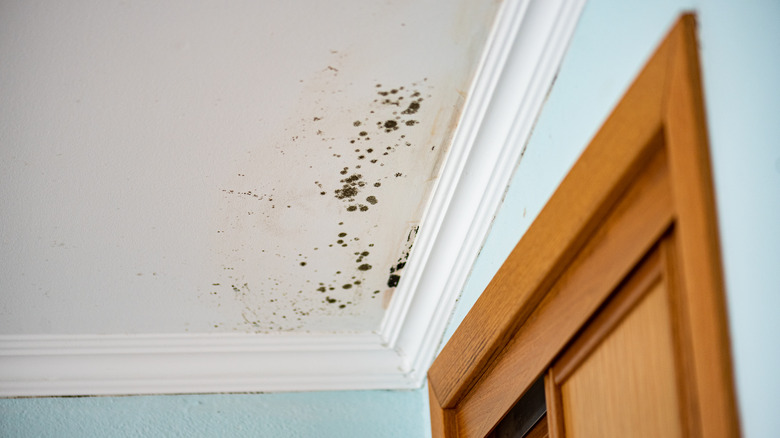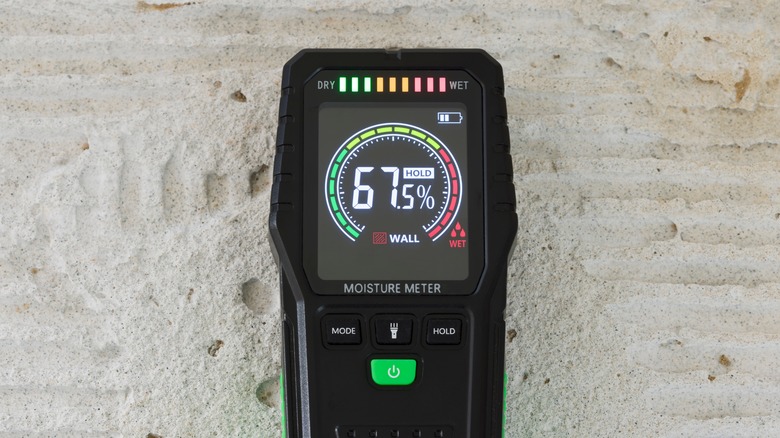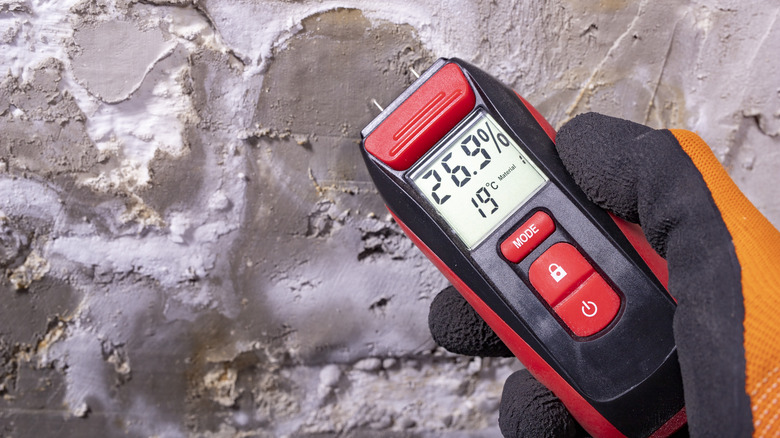The Gadget You Need To Detect Where Mold Might Grow In Your Walls
If you're a homeowner or concerned tenant, there are always going to be a few tools or gadgets you'll want to have on hand for safety. One gadget you'll want to own if you have concerns about mold is a moisture meter. To be clear, moisture meters will not test if there is mold in your house. Instead, they can help you find pockets of moisture that could create the conditions conducive for mold growth. Therefore, they detect the possible presence of mold in the future and not any current mold. This gadget can come in handy for various occasions including when purchasing a new home, returning home after a hurricane, or when making renovations or painting throughout your house.
Different than a soil moisture meter for your houseplants, a moisture meter for the home can detect the moisture content in wood, drywall, plaster, insulation, roofing, and even tile. Each of these various materials may require you to utilize different modes, which can be found on either the same or different products found on the market. So make sure you do your research and read the specific instructions that come with your device. Here's why moisture meters are helpful, how to use them, and the two different types of meters you could choose.
Why and how to use a moisture meter to detect mold risk
Completely eliminating mold spores from your home is impossible. The best way to prevent growth is to identify and fix moisture problems early on. Otherwise, you'll have to treat the mold itself later in the future, which is much more of a hassle and more dangerous to your health. If you see condensation or peeling paint or notice a musty scent, you might have a moisture issue, and a moisture meter will help you be more certain. Whether mold spores grow depends on various factors such as air circulation, cleanliness, and water leaks, but a good rule of thumb is that growth will likely occur if there is consistently about 20% moisture levels in the area, per the International Association of Certified Home Inspectors.
How you use your moisture meter to test for mold conditions will depend on the specific device you purchase, the part of your home you are concerned about, and other factors such as depth and the type of material. When using a moisture meter, get a controlled reading from areas of your home that you know are constantly dry. If you get a high-moisture reading from somewhere you know is dry, your device may have technical issues or need to be calibrated. Before interpreting a moisture reading as a fact, ensure you know your device's limitations and strengths. Taking multiple readings throughout your investigation will also help determine the consistency of moisture conditions.
The two types of moisture meters
Generally, there are two types of moisture meters: pin-type and pinless. Pin-type moisture meters utilize two pins to detect and measure the electrical conductivity of the surface material in question. Because water conducts electricity, a pin-type meter can gauge moisture levels based on the level of conductivity. This type of moisture meter is best for surface materials such as plaster, wood, drywall, and stucco. Furthermore, probes can be added to a pin-type moisture meter to extend its depth within such materials.
A pinless moisture meter is used to measure moisture levels beneath a material's surface. Instead of using pins or probes, a pinless meter emits electromagnetic waves to determine moisture levels. This means that these types of tools don't damage the surface at all and can be used on a wider variety of materials. However, they often require a flat surface and are less effective on coarse or uneven surfaces. No matter what type of meter you choose, if you detect high moisture levels, you'll need to get rid of the moisture to avoid mold growth. One hack is to use kitty litter to reduce moisture in a basement, but you could also use a dehumidifier or call in a professional to help.


